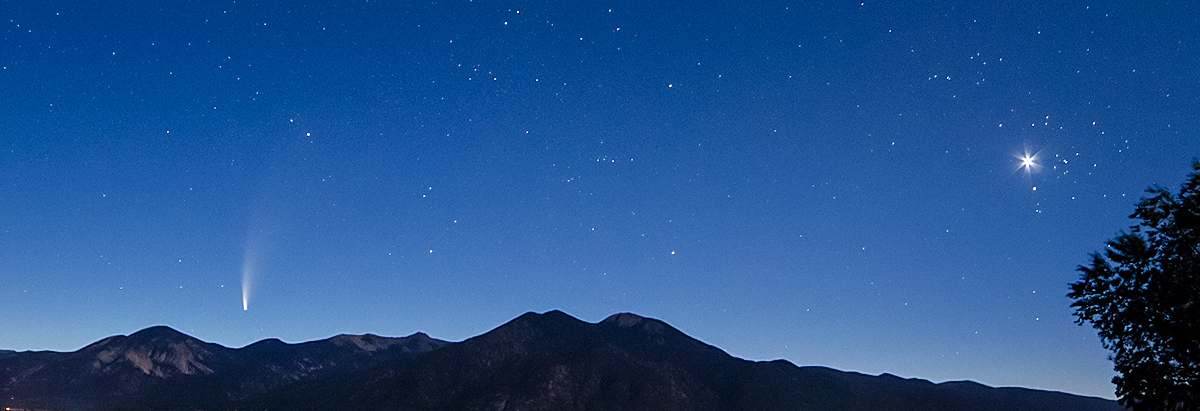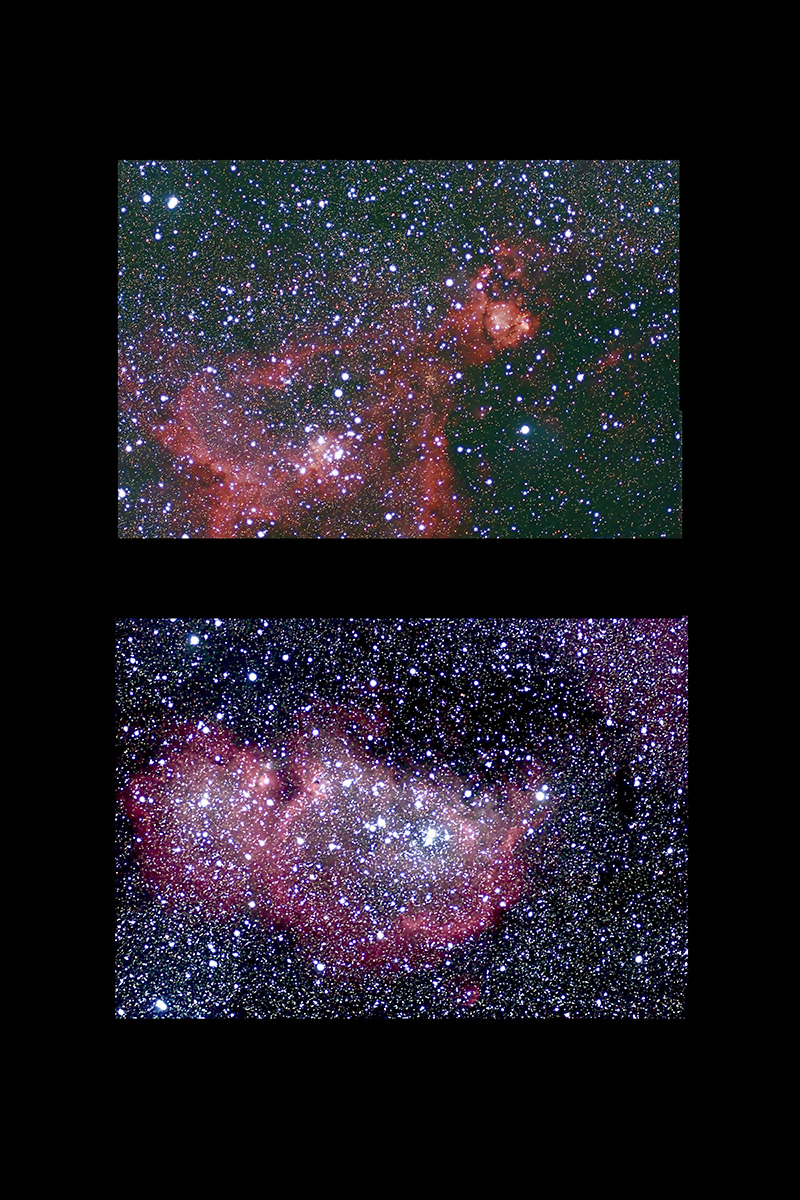top image . . .
"
The Heart Nebula, IC 1805, Sh2-190, lies some 7500 light years away from Earth and is located in the Perseus arm of the Galaxy in the constellation Cassiopeia. This is an emission nebula showing glowing gas and darker dust lanes. The nebula is formed by plasma of ionized hydrogen and free electrons. The very brightest part of this nebula (the knot at the right) is separately classified as NGC 896, because it was the first part of this nebula to be discovered. The nebula's intense red output and its configuration are driven by the radiation emanating from a small group of stars near the nebula's center. This open cluster of stars known as Melotte 15 contains a few bright stars nearly 50 times the mass of our Sun, and many more dim stars that are only a fraction of our Sun's mass. The cluster used to contain a microquasar that was expelled millions of years ago."
above credit -- wikipedia
bottom image . . .
"W5, a radio source within the nebula, spans an area of sky equivalent to four full moons and is about 6,500 light-years away in the constellation Cassiopeia. Like other massive star-forming regions, such as Orion and Carina, W5 contains large cavities that were carved out by radiation and winds from the region's most massive stars. According to the theory of triggered star formation, the carving out of these cavities pushes gas together, causing it to ignite into successive generations of new stars. The image in the gallery above (see the wikipedia link below) contains some of the best evidence yet for the triggered star formation theory. Scientists analyzing the photo have been able to show that the ages of the stars become progressively and systematically younger with distance from the center of the cavities."
above credit -- wikipedia
Note -- click this text to be linked to an excellent and entertaining tutorial discussing this object and the methodology of finding it without the use of digital setting circles or go-to auto-aiming technologies. Excellent!
for additional information about this complex area of our Milky Way galaxy, click this text . . .
[copyright Rabbit Valley Observatory/Willis Greiner, 2015 -- all rights reserved]

